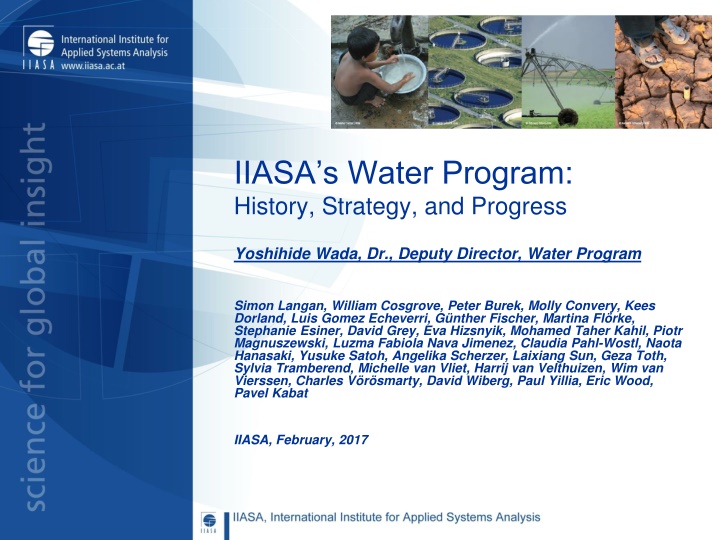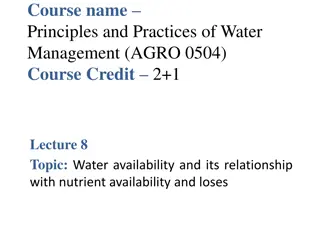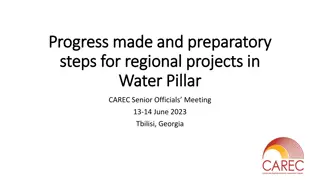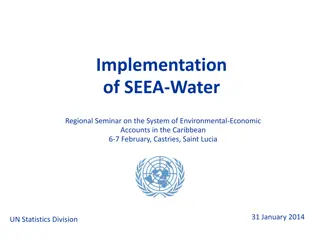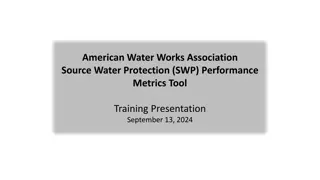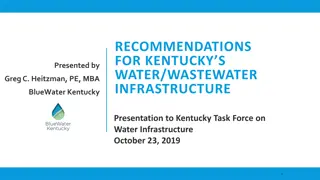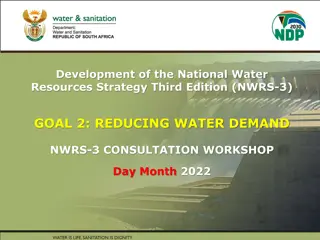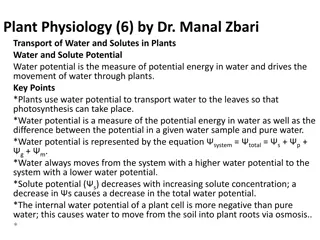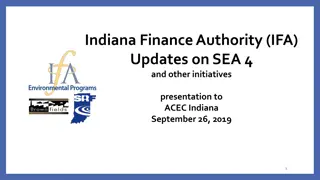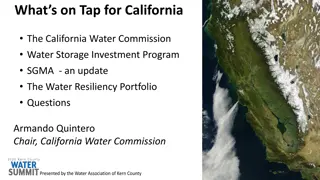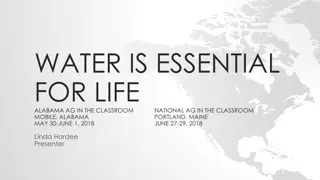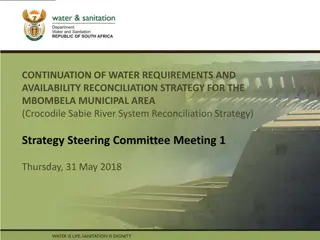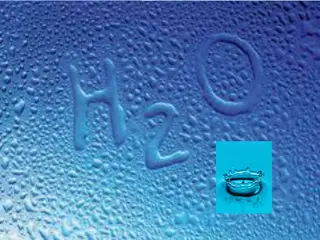IIASA's Water Program: History, Strategy, and Progress
IIASA's Water Program focuses on addressing water insecurity, uncertain futures, food security, degraded water environments, and the impacts of floods and droughts. Their mission involves conducting interdisciplinary research to identify sustainable water solutions for improving human well-being through enhanced water security. The Water Futures and Solutions Initiative aims to analyze innovative solutions through integrative water futures analysis, with a structured approach involving various coalitions and strategies to reduce water scarcity by 2050.
Download Presentation

Please find below an Image/Link to download the presentation.
The content on the website is provided AS IS for your information and personal use only. It may not be sold, licensed, or shared on other websites without obtaining consent from the author.If you encounter any issues during the download, it is possible that the publisher has removed the file from their server.
You are allowed to download the files provided on this website for personal or commercial use, subject to the condition that they are used lawfully. All files are the property of their respective owners.
The content on the website is provided AS IS for your information and personal use only. It may not be sold, licensed, or shared on other websites without obtaining consent from the author.
E N D
Presentation Transcript
IIASAs Water Program: History, Strategy, and Progress Yoshihide Wada, Dr., Deputy Director, Water Program Simon Langan, William Cosgrove, Peter Burek, Molly Convery, Kees Dorland, Luis Gomez Echeverri, G nther Fischer, Martina Fl rke, Stephanie Esiner, David Grey, Eva Hizsnyik, Mohamed Taher Kahil, Piotr Magnuszewski, Luzma Fabiola Nava Jimenez, Claudia Pahl-Wostl, Naota Hanasaki, Yusuke Satoh, Angelika Scherzer, Laixiang Sun, Geza Toth, Sylvia Tramberend, Michelle van Vliet, Harrij van Velthuizen, Wim van Vierssen, Charles V r smarty, David Wiberg, Paul Yillia, Eric Wood, Pavel Kabat IIASA, February, 2017
Half our planets population are water insecure uncertain futures Food security and Irrigation Absent or unreliable WSS Degraded water environments The impacts of unmitigated variability including floods & droughts Motivation
Mission: IIASA s Water Program (WAT) convenes international, interdisciplinary research on possible water futures and their interactions and implications across larger systems to help identify robust and sustainable options across those futures and systems that can help improve human well-being through enhanced water security and beyond. Objectives
Water Futures and Solutions (WFaS) Initiative Towards Innovative Solutions through Integrative Water Futures Analysis
WFaS Project Structure Consists of three major coalitions Organized into the following groups Sponsor Coalition Governing Board ensuring consistency & usefulness of outputs Sector Actors Group Scenario Focus Group Project Director Science Coalition Stakeholder Coalition WaterFutures4 the World Project Team External experts Secretariat
Reducing Water Scarcity Possibly by 2050 Each solution = 2% reduction We present six strategies, or water-stress wedges, that collectively lead to a reduction in the population affected by water stress by 2050, despite an increasing population. - Water productivity crop per drop - Irrigation efficiency decrease losses - Water use intensity industry and domestic - Population - Reservoir storage - Desalination Soft path vs. Hard path Wada et al. (2014), Nature Geoscience
Improvement in water productivity at 0.5% per year (20% by 2050) Efficiency increase by 1% per year (40% by 2050) Improvement of 0.5% per year (20% by total) Limit population growth by 0.5 billion (8.5 billion by 2050) 7
Additional 600 km3 reservoir storage (by 2050) US$ 10 billion?? 50 times increase in desalination capacity (by 2050) US$ 20 billion?? 8
IIASA Community Water Model ( IIASA Community Water Model (CWatM CWatM) ) 9
Nexus Integration towards SDGs Enhanced water assessments Improved analysis feedbacks Electricity production Energy futures/options Technical innovation Temperature? Quality? MESSAGE Energy MESSAGE Energy Available water river discharge Variability/Risk Supply costs impacts Community Water Model Community Water Model GLOBIOM GLOBIOM Env. Env. Water Water Land use/cover Crop area/type Irrigation area LAI Shadow price of water ?) Available water river discharge groundwater risk/variability soil moisture impacts of use 10
